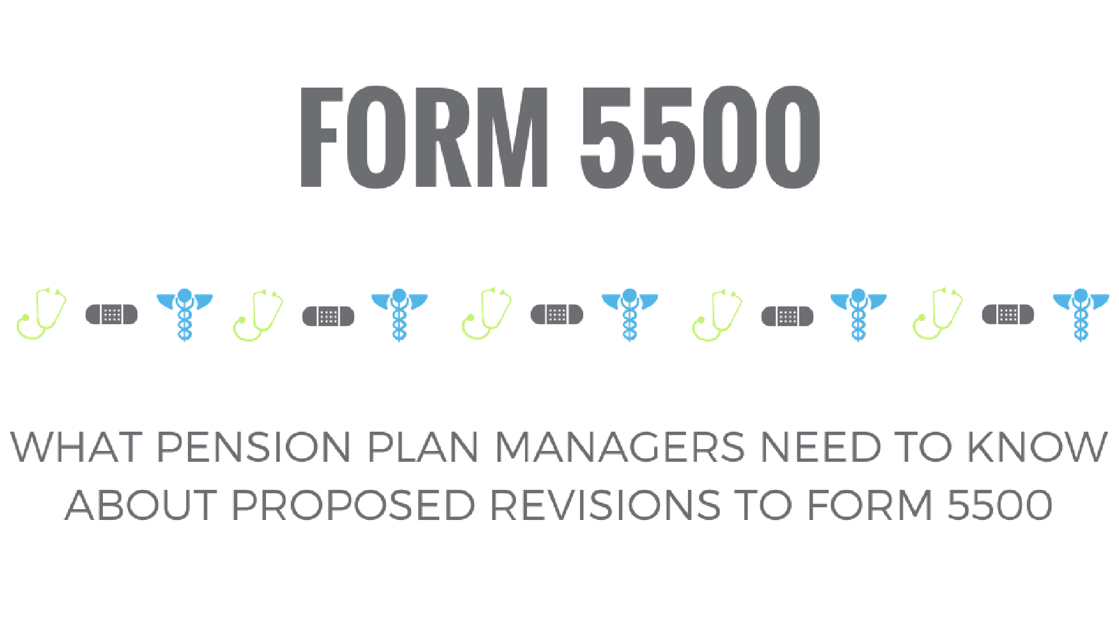Form 5500: What Could Change for Pension Plan Managers
November 9, 2016 •Randall Ronsberg

On July 21, 2016, the Department of Labor (DOL) Employee Benefit Security Administration (EBSA), Internal Revenue Service (IRS), and Pension Benefit Guaranty Corporation (PBGC) proposed a rule that would change how employee benefit plans share information with the government. This proposal, which revises the existing Form 5500, is intended to make data more useful and protect employees. DOL has encouraged stakeholders to submit public comments on these changes. Read our other posts about the proposed rule here.
Summit recently submitted comments on the proposed rule to revise Form 5500. In this post, we break down key revisions that pertain to pension plans.
.png?width=320&name=Pension%20Plan%20Managers%20Form%205500%20(4).png) Plans WOULD be required to Share Data in an Easy-to-Analyze format.
Plans WOULD be required to Share Data in an Easy-to-Analyze format.
Plans are already required to disclose important information on plan financial health and investments. However, this data is submitted in a free-form fashion that cannot be analyzed easily. The proposed rule offers a standardized format that will facilitate more accurate investment comparisons across plans. For example, it will allow analysts to examine a plan’s portfolios to determine whether their investment options’ performance (considering fees and returns) are comparable to other similarly sized plans. These data will allow researchers to identify underperformers, and that knowledge can be used by plan sponsors to negotiate better investment options to improve participants’ retirement security.
Plans WOULD be required to Disclose their administrative expenses.
The proposed rule would require plans to disclose more detailed information about administrative expenses. It will also ask plans to identify when expenses are charged directly to participants. Currently, Form 5500 expense information leaves a good deal of uncertainty about plan costs. The information will be more insightful if it explicitly indicates whether or not participants are being charged directly for plan costs. This will allow researchers and regulators to identify true costs to participants and more accurately assess the performance of retirement plans based on cost.
Our team is excited about these changes. They will increase the transparency of the plan’s investment options and expenses paid to administer the plan. At Summit, we believe that the increase in marketplace transparency will in turn increase competitiveness and benefit the bottom line for retirement plans. For more information, you can find DOL’s fact sheet on the proposed rule here.
Read our other posts about the proposed rule here.
Get Updates
Featured Articles
Categories
- affordable housing (12)
- agile (3)
- AI (4)
- budget (3)
- change management (1)
- climate resilience (5)
- cloud computing (2)
- company announcements (15)
- consumer protection (3)
- COVID-19 (7)
- data analytics (82)
- data science (1)
- executive branch (4)
- fair lending (13)
- federal credit (33)
- federal finance (4)
- federal loans (4)
- federal register (2)
- financial institutions (1)
- Form 5500 (5)
- grants (1)
- healthcare (17)
- impact investing (12)
- infrastructure (13)
- LIBOR (4)
- litigation (8)
- machine learning (2)
- mechanical turk (3)
- mission-oriented finance (7)
- modeling (9)
- mortgage finance (10)
- office culture (26)
- opioid crisis (5)
- Opportunity Finance Network (4)
- opportunity zones (12)
- partnership (15)
- pay equity (5)
- predictive analytics (15)
- press coverage (3)
- program and business modernization (7)
- program evaluation (29)
- racial and social justice (8)
- real estate (2)
- risk management (10)
- rural communities (9)
- series - loan monitoring and AI (4)
- strength in numbers series (9)
- summer interns (7)
- taxes (7)
- thought leadership (1)
- white paper (15)


